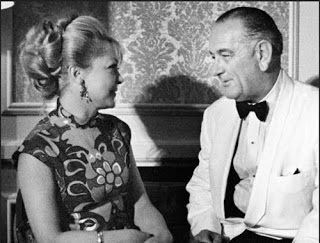Several people have been noting that next year, 2017, will mark the 50th anniversary of Israel’s occupation of the West Bank (including East Jerusalem), Gaza, and Golan. But the imminent arrival of this somber– and truly mind-boggling– anniversary reminds me that 2017 will mark important anniversaries of three other crucial developments in the Palestine Question, too. These are:
- The centennial (100-year anniversary, no less!) of the Balfour Declaration, the diktat from the British Foreign Secretary that imperial London would support the creation of a “Jewish national home” in Palestine– whatever that meant… but would do so only provided that the “civil and political rights” of the non-Jewish inhabitants of Palestine would not be adversely affected. (Fat chance!)
- The 70th anniversary of the UN Partition Plan for Palestine– which gave Israel (along with its conjoined twin, the never-born Palestinian Arab state) the only “birth certificate” it has ever had in international law; and
- The 30th anniversary of the launching of the First Intifada, which started in Gaza on December 9, 1987, spreading rapidly through the whole of the Occupied Palestinian Territories.
Make no mistake about it: 50 years of rule by a foreign military is already a terrible travesty, and a crime against the whole Lockean concept that government can only legitimately be exercised “through the consent of the governed.” When the international community most recently codified and regulated the whole concept of rule by “military occupation”, in the Geneva Conventions of 1949 (especially the 4th one), it was only ever envisaged that military occupation by a foreign military power would be a temporary, or short-term situation, pending the conclusion of a conflict-resolving final peace treaty.
But for Palestinians and the legitimate indigenous residents of occupied Golan? No. For them, occupation has hardened into a 50-year-old force that because of Israel’s massive (and completely illegal) policy of moving of large numbers of its own civilians into the West Bank and Syria’s Golan region now looks harder than ever to reverse or displace.
I remember back in early 1987, when pro-peace (or pro-peace-ish) Israelis first started facing up to idea that their occupation of the West Bank, Gaza, and Golan was about to hit the 20-year mark. They were nonplussed! “How did this happen!” some of them exclaimed. That was back then, when there was still a fairly large “Peace Now” movement in Israel…
Six months after June 1987, the first intifada broke out. What heady (and painful) days those were for Palestinians. It may be hard to remember now, but traveling among all the cities of the West Bank, including East Jerusalem, and between those cities and Gaza was still relatively easy to do. Jerusalem was the organizing hub for the whole intifada. Throughout the six years that followed, the occupied territories were abuzz with numerous, very creative forms of nonviolent resistance…
Oslo, and the “return” soon thereafter to the OPT’s of the PLO leadership apparatus, put an end to all of that. Oslo ushered in, in quick order, the severing of Jerusalem from the rest of the West Bank by an Israeli ring of steel; and then the progressive quadrillement of the whole of the West Bank– its dividing-up into tiny, mutually impenetrable cantons– by the new Israeli road system that had been specifically allowed by the PLO leadership as part of the Oslo arrangements; and the cutting-off of Gaza which later allowed Israel’s imposition on it of a debilitating, total siege…
At this point, nearly 30 years after 1987, I think the most constructive and realistic way to view “the occupation” is not as a singular step that started in 1967 that was somehow a “deviation” from what “should” have been Israel’s rightful path, but rather as a continuation of the settler-colonial process that started to gain international political traction with Lord Balfour’s declaration of 1917… and then won a serious (and troublingly “colonial”) international imprimatur from the infant United Nations in 1947…and has certainly continued since 1967 with Israel’s increasingly blatant colonization of the West Bank (and Golan.)
So let’s not just look at 1967. Let’s look at 1947, too– the year just 20 years earlier than 1967 when (a) the United Nations voted to give half of Palestine, lock-stock-and-barrel, to its overwhelmingly recently arrived population of Jewish settlers– this, in an era when everywhere else in the world de-colonization was already underway; and (b) the leaders of the Zionist yishuv in Palestine took the Partition Plan as their carte blanche (as Ilan Pappe has so rightly documented) to start launching their program of anti-Palestinian ethnic cleansing in–and soon enough also beyond– the areas the Partition Plan had allotted them. Yes, as Pappe has shown in his work, the Nakba started in November 1947.
And yes, the period of time that Israel has controlled the West Bank, Gaza, and Golan is far, far longer than the earlier period during which it controlled “only” the area within its pre-1967 boundaries (which were already, as we know, considerably broader than what the UN gave to the “Jewish state” in the Partition Plan.)
… And let’s look, too, at 1917, the year that Chaim Weizmann, Lord Rothschild, and other Zionist leaders managed to persuade British Foreign Secretary Lord Balfour to issue his infamous declaration, which was later incorporated into all the post-WWI peace agreements– as part of which, by amazing happenstance, Britain emerged with a neo-imperial “Mandate” from the League of Nations to rule over Palestine (and Jordan and Iraq)… just until these countries’ own inhabitants should be “ready” to exercise self-rule, you understand.
1917 came 32 years after the infamous Conference of Berlin, in which the European powers sat round and solemnly carved up the whole of the African continent amongst themselves, to let each participating power engage in settler colonialism, looting, and rapine within its designated zone, exactly as it wished. But still, by 1917, the tide of global opinion was already starting to turn against settler colonialism and the “rights” of all the world’s peoples were much on the lips of diplomats.
Zionists have often tried to portray their movement as one of “national liberation” from foreign (including British) rule. In truth, though, they have always relied on the patronage of other, much larger, globally powerful states in order to realize their settler-colonial objectives in historic Palestine. That was the case in 1917. It was the case in 1947. It was the case in 1967. And it remains the case, today. Without the support that Washington has lavished on Israel– within its current, expansionist borders– for several decades now, there is no way that Israel could have defied all the norms by which the whole of the rest of the world community has to abide… and could have done so, continuously, for the whole of the past 50 years.
The publishing company that I founded in 2010, Just World Books, has published numerous great books on the Palestine Question. You can see the whole list of our publications here. Now, we are working on our plans for the books we’ll be publishing later this year, and in 2017. (Stay tuned!) And we’re also, along with our friends, allies, and partners, planning to organize a great series of events around the whole United States in 2017, so that communities everywhere around the country can better understand what is happening in Palestine/Israel. More people in the United States than ever before are now hungry for good information about what’s happening in Palestine, and eager to understand both how the situation got to be where it is today, and what our own country’s role in that has been.
There’s no doubt that 2017 will be a crucial year for broadening the discussion of what’s happening in Palestine/Israel. But we shouldn’t just be looking at 50 years of occupation. We need to look, too, at 100 years of Western-supported Zionist settler-colonialism in Palestine, the 70-year anniversary of the Partition Plan and the Nakba that it sparked, and the 30-year anniversary of the First Intifada. When we look at all these anniversaries and put them into perspective alongside each other, then we can much better understand the state of the Palestine Question today.
 But neither the NYT nor any other Western MSM outlet I have seen/heard has made any mention of the role Mrs. Krim played as a very close confidante to Pres. Lyndon B. Johnson during the crucial days leading up to and during Israel’s “Six Day War” of 1967 again its Arab neighbors.
But neither the NYT nor any other Western MSM outlet I have seen/heard has made any mention of the role Mrs. Krim played as a very close confidante to Pres. Lyndon B. Johnson during the crucial days leading up to and during Israel’s “Six Day War” of 1967 again its Arab neighbors.